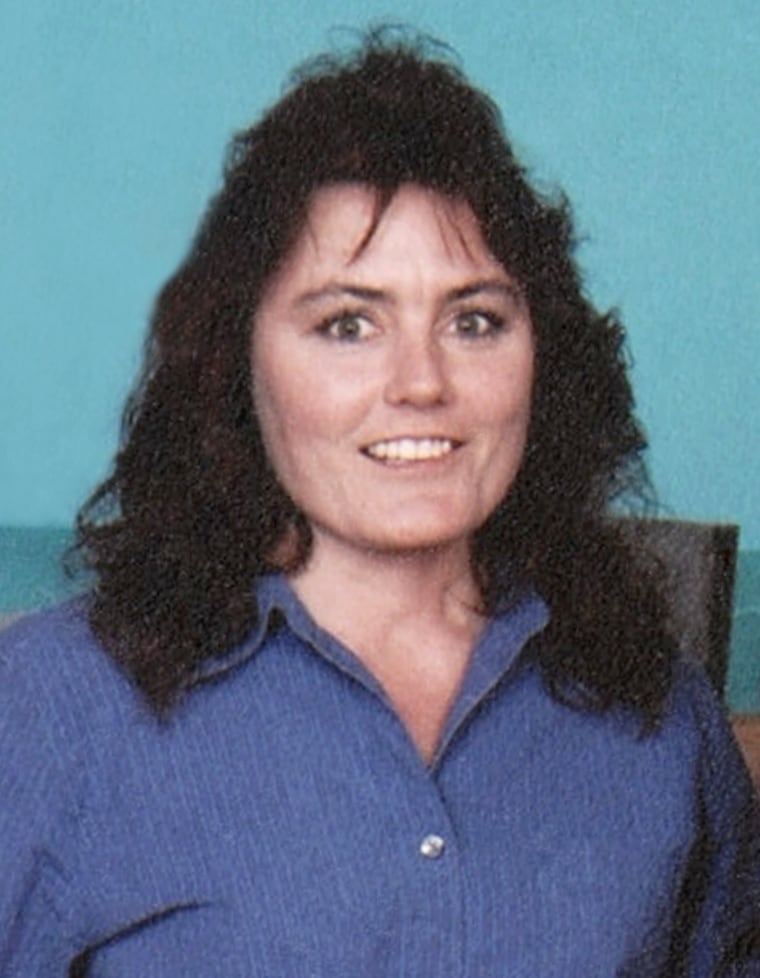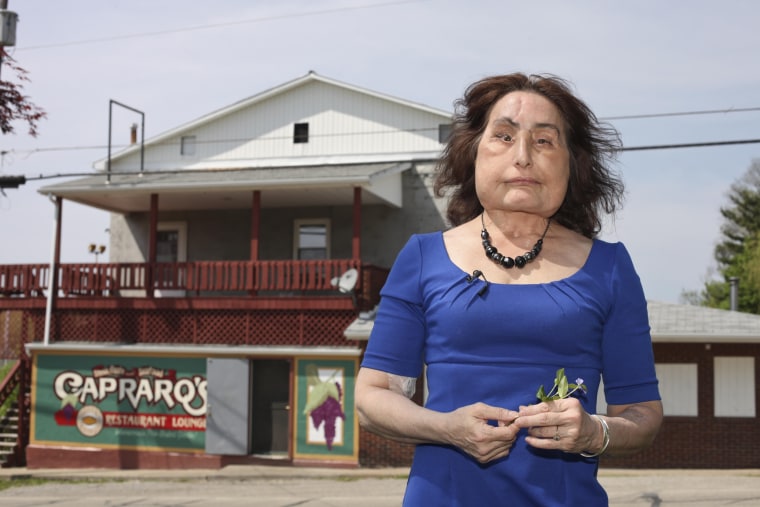Connie Culp, the first face-transplant recipient in the United States, has died, according to the Cleveland Clinic, which performed the surgery.
"We are saddened by the loss of Connie Culp," the clinic said on Twitter on Friday, adding that she was "an inspiration to all of us" at the medical facility.
The exact cause of death for Culp, who was 57, has not been released, but she had been in the hospital for several days, NBC affiliate WKYC in Cleveland reported.
"Connie was an incredibly brave, vibrant woman and an inspiration to many. Her strength was evident in the fact that she had been the longest-living face transplant patient to date," Dr. Frank Papay, chair of the Cleveland Clinic's Dermatology and Plastic Surgery Institute, said in a statement. "She was a great pioneer and her decision to undergo a sometimes daunting procedure is an enduring gift for all of humanity."
Culp arrived at the Cleveland Clinic in 2004 after her then-husband shot her in the face before turning the gun on himself. He survived and was sent to prison for seven years.
In 2008, doctors began a 22-hour procedure to replace 80 percent of Culp's face with that of a deceased donor. Before receiving the transplant, Culp had already undergone nearly 30 other corrective surgeries.
A few years after the transplant surgery, Culp was able to meet the family of the woman whose face had been donated to her. The donor, Anna Kasper, 44, had died of a heart attack two weeks before Christmas in 2008.
"I'm so glad you did this for me," Culp told Becky Kasper, Anna's daughter, in an emotional encounter caught on camera by ABC News. "What do you say? I mean, thank you's not strong enough, you know."

While the transplant could never return Culp's original looks, it helped her regain senses that had been lost after the shotgun blast shattered her nose, cheeks, the roof of her mouth and an eye.
Culp said in 2009 that the smell of soap made her realize her new face was working.
Two years later, she told "TODAY" she could smell again, but "only good things" such as cooking, perfume and flowers brought to her by her 4-year-old old grandson, Maddox. Culp also said she was able to eat anything, including a good steak, after years of just eating soft foods.
After the transplant, Culp dedicated years of her life to sharing her story and speaking out about domestic violence, as well as educating and encouraging others who were to undergo transplant surgeries.
A year before her ex-husband, Thomas, was released from prison in 2011, Culp told journalist Diane Sawyer that while she would always love him because they have two children together, "I cannot be with him anymore."
Culp's remarks came months after she told Oprah Winfrey that her daughter, Alicia, helped her realize she could never take Thomas back when she asked, "What kind of example would you set for me if you went back to the man that shot you?"
She told "TODAY" that she tried to not dwell on memories of the shooting or the way she used to look, but she often had to deal with stares and comments from strangers, particularly children, according to a 2010 profile in the Plain Dealer in Cleveland.
Humor helped her cope, said Culp's twin sister, Bonnie Oberlin.
Once, months before the transplant surgery, Culp glued on a prosthetic nose before going out to lunch with her sister, the Plain Dealer reported.
"Connie," Oberline whispered at one point during the meal. "Your nose is coming loose."
"I know, damn it," Connie whispered back, then peeled off the nose, put it into her purse and continued eating.
A few weeks later, they went back to the same restaurant, and Culp ran face-first into the restaurant’s glass doors.
“It’s a good thing I didn’t have my nose on,” she said, according to Oberlin. “It would’ve smooshed into my face.”
Surgeon Dr. Maria Siemionow said her journey helping Culp's recovery inspired her research into reducing transplant rejection.
"Thinking about Connie is thinking about someone who's not giving up, and I'll not give up," she told WKYC. "We are connecting the donor and recipient bone marrow cells to support face transplantation and other organ transplants in order to induce tolerance and reduce the need for lifelong immunosuppression."


